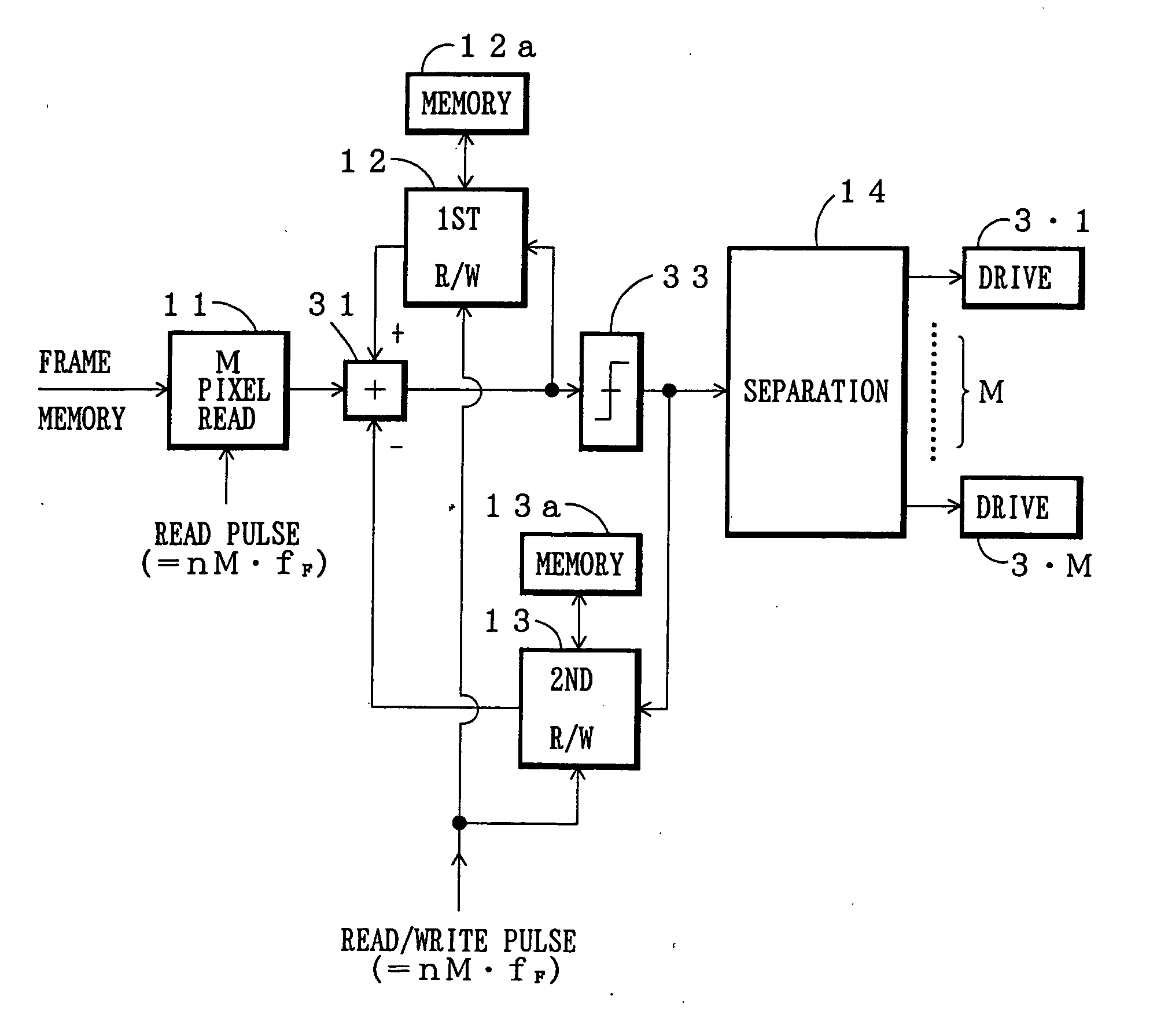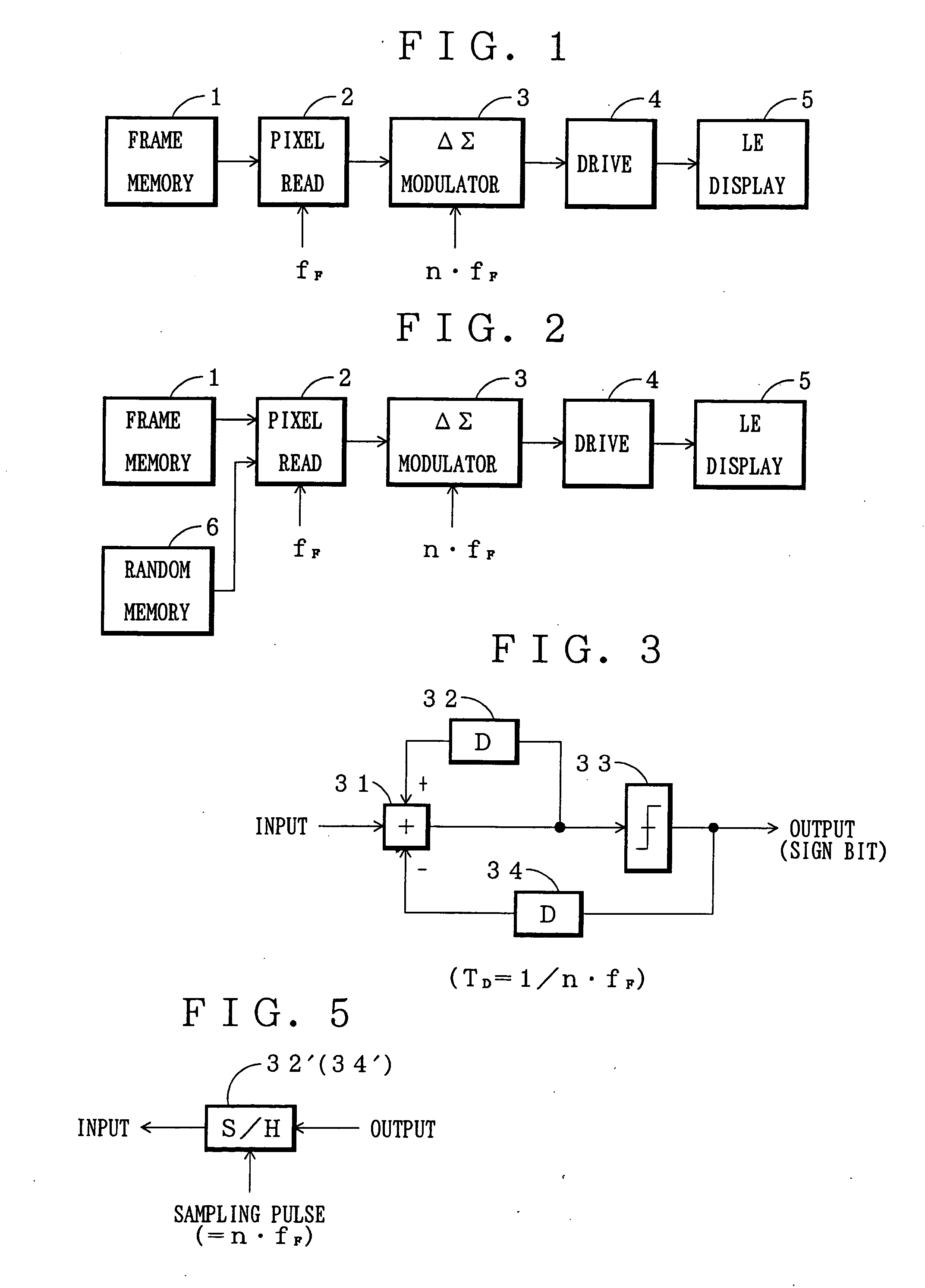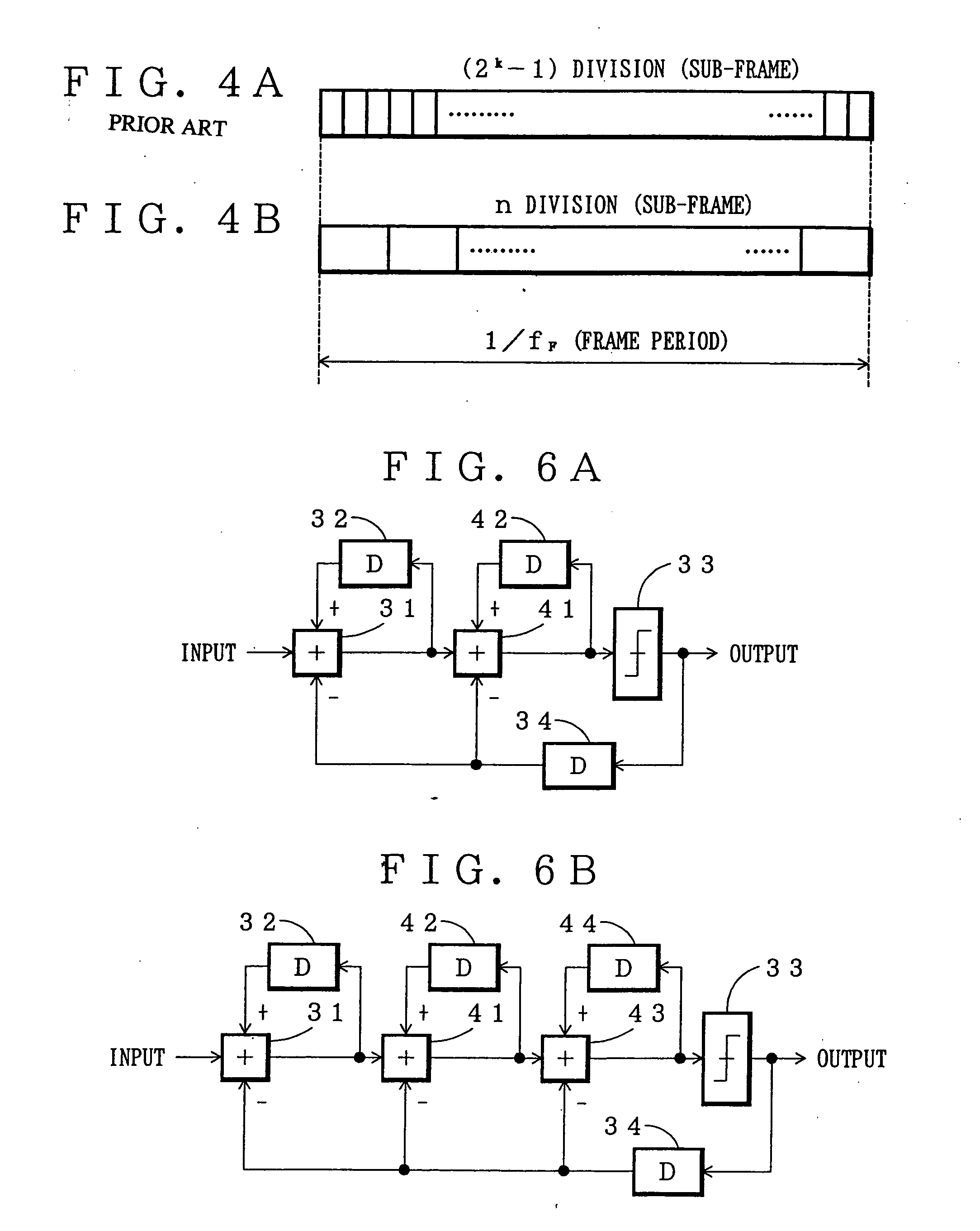Apparatus for driving light-emitting display
- Summary
- Abstract
- Description
- Claims
- Application Information
AI Technical Summary
Benefits of technology
Problems solved by technology
Method used
Image
Examples
first embodiment
FIG. 3 is a block diagram of the ΔΣ modulator according to this invention.
In FIG. 3, reference numeral 31 denotes an addition unit; 32 and 34 denote a first and a second delay unit for delaying input pixel data by the time TDwhich is 1 / n of the frame period (1 / n·fF (fF is a frequency of the frame pulse); and 33 denotes a decision unit which produces a positive prescribed value if the output value from the addition unit 31 is a prescribed or larger value and produces a negative prescribed value if the output value is smaller than the prescribed value.
The first delay unit 32 delays the output from the addition unit 31. The addition unit 31 performs an addition of the delayed output and the input pixel data.
The output from the decision unit 33 is delayed by the second delay unit 34. The delayed output is subjected to subtraction by the addition unit 31.
The output to be supplied to the driving unit 4 produces a sign bit (if positive, “1”, and if negative, “0”) which represents th...
second embodiment
Now referring to FIG. 5, an explanation will be given of this invention.
In the first embodiment, the signal (pixel value) was delayed using the first delay unit 32 and the second delay unit 34, whereas in the second embodiment, these delay units is replaced by a sample-and-hold unit (S / H) 32′ (34′) as shown in FIG. 5.
The S / H unit 32′ holds and outputs an input value whenever a sampling pulse is received. Therefore, if the frequency of the sampling pulse is set at the frequency which is n-times of the frequency fF of the frame pulse, i.e. n·fF, the pixel data can be delayed like the first delay unit 32 and second delay unit 34.
third embodiment
Referring to FIGS. 5A and 5B, an explanation will be given of the
In the first embodiment, as shown in FIG. 3, the first-order ΔΣ modulator was used. In this embodiment, a second-order ΔΣ modulator as shown in FIG. 5A or a third-order modulator as shown in FIG. 5B is used.
As shown in FIG. 6A, the second-order ΔΣ modulator is constructed so that a second addition unit 41 and a third delay unit 42 are cascade-connected between the addition unit 31 and the decision unit 33 in the first-order ΔΣ modulator explained with reference to FIG. 1.
The second addition unit 41 makes the same operation as the addition unit 31. The delay time is set at the same time as that of the first delay unit 32 and the second delay unit 34.
As shown in FIG. 6B, the third-order ΔΣ modulator is constructed so that a third addition unit 43 and a fourth delay unit 44 are cascade-connected between the second addition unit 41 and the -decision unit 33 in the second-order ΔΣ modulator.
By raising the order of ...
PUM
 Login to View More
Login to View More Abstract
Description
Claims
Application Information
 Login to View More
Login to View More - R&D
- Intellectual Property
- Life Sciences
- Materials
- Tech Scout
- Unparalleled Data Quality
- Higher Quality Content
- 60% Fewer Hallucinations
Browse by: Latest US Patents, China's latest patents, Technical Efficacy Thesaurus, Application Domain, Technology Topic, Popular Technical Reports.
© 2025 PatSnap. All rights reserved.Legal|Privacy policy|Modern Slavery Act Transparency Statement|Sitemap|About US| Contact US: help@patsnap.com



